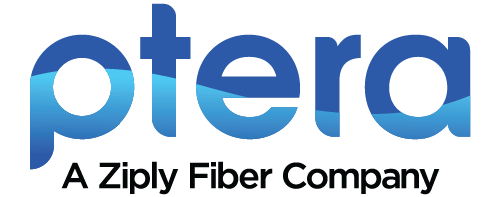Private. Secure. Super Fast
What makes Ptera's network so special?
How does Ptera's network work?
For two decades, Ptera has been providing “Fixed Wireless” internet to the Inland Northwest. We have miles of fiberoptic cable running throughout Spokane, bringing an internet connection to radio towers which then broadcast a wireless signal over a large area. If your service address is within range of a tower, we can probably get you connected!
What is "fixed wireless" internet, and how is it different from cable or DSL?
We offer Fiber-fed Fixed Wireless internet in many areas throughout the Inland Northwest, whether there are other services available or not. . Our wireless product differs from cable, satellite, fiber, mobile, or DSL (phone line). Those are all delivery methods for getting the internet into your home. With Ptera wireless service, there are no wires that are attached from somewhere off-site to your structure. Fixed wireless Internet is received at your location wirelessly from a vertical structure within a few miles from your home or business.
Fixed wireless should not be confused with WiFi, where bandwidth is shared on a “one to many” basis, typically in a “hotspot”. Rather, fixed wireless Internet locks in a secure signal between two points, the tower, and your individual home or business.
Because both endpoints are in fixed locations, we are able to lock in a signal, rather than trying to find a moving target the way mobile wireless technology works. In comparison to satellite Internet, because the fixed wireless signal travels just a few miles from a terrestrial tower, the latency (ping time) is typically much faster than satellite Internet, and often rivals and beats the wired cable and DSL providers. It is also less impacted by weather, making for a better customer experience than satellite.
Note that with fixed wireless Internet, the strength and dependability of the Internet service depend heavily on the signal from the radio to the tower. Coverage for wireless Internet depends on the signal between your home/business and a fixed tower location. Feasibility is determined on a case-by-case basis, depending on distance, topography, foliage, and network capacity.
What is "Ptera Fiber" internet?
Some service addresses are so close to our grid of fiberoptic cable that they can directly connect to the fiber, without need of a wireless connection.
Fiber Internet is the latest improvement to the way data is transferred around the world. It’s significantly faster than cable, way faster than dial-up, and can carry large amounts of data in a single line, even reaching multiple terabits of data transfer with ease.
Fiber optic cables use small glass fibers to transmit data via pulses of light. The light travels similarly to the way electricity travels through a copper wire, but the significant advantage is that fiber cables can carry multiple signals simultaneously. They’re amazingly small, so they’re often bundled into larger cables called “fiber optic trunk or distribution cables,” each holding multiple fiber lines. Fiber cables carry huge amounts of data, with speeds as high as 1 Gbps (often called “gigabit internet”) at your home.
What can I expect at the time of my installation?
In some cases you will need a site survey performed to qualify your location for service before we can schedule an installation. If an Account Specialist determines that you can get service, either from the site survey results, or from a digital survey performed from the office, then you will be scheduled for installation. You will be given explicit instructions for any work that would need to be performed prior to the date of installation, and your expectations will be set for what to expect to happen during the installation. We plan for standard installations to take up to two hours, and someone age 18 or older must be present at the time of installation.
On the day of your installation, the technician performing the installation will call ahead to let you know their approximate arrival time. At that point, you can expect a trained and professional installation technician to arrive and either pull from the original site survey notes or begin a site survey in order to determine the best location to attach an antenna/radio, typically on the top or side of your structure. The technician will keep you informed as to the installation location, and will then install both outside equipment and inside WiFi router, whether we supply the router or we use your router. They will then leave you with your WiFi name & password to integrate with all of your home devices. The technician will also walk you through your customer portal, through which you can submit support tickets, pay your bill, and view important data about your account.
Is there an installation charge?
There is a one time standard installation fee of $125 for residential customers, and a one-time standard installation fee of $300 for commercial locations. Non-standard installation rates vary depending on hardware and any other custom needs.
What equipment will I need?
If you choose to use your own router, that is all you will need. If you decide to use Ptera Family Wifi, then Ptera will supply the router, and you will just be called upon to approve the location chosen by the technician to install the antenna outside your home, as well as the wire run from the antenna into your home to the location of the router.
What does Gig Speed even mean?
The connection speed available at the device we install on your premises is capable of transmitting 1,000,000,000 bits of information every second. Understand that your actual throughput speed depends on many factors.

Residential Internet PackagesStarting from $45

